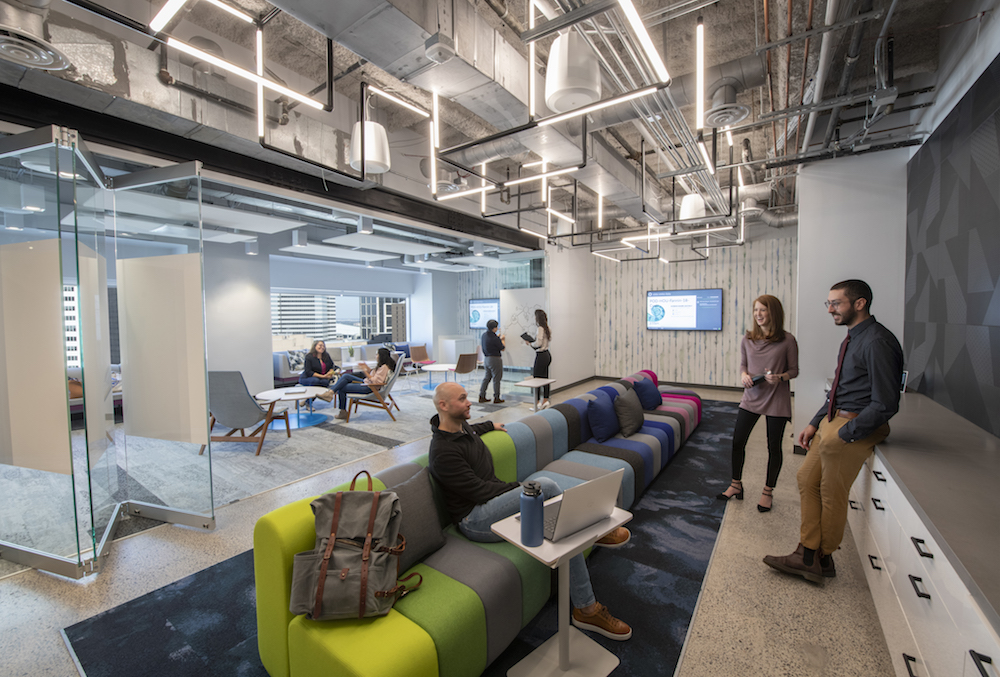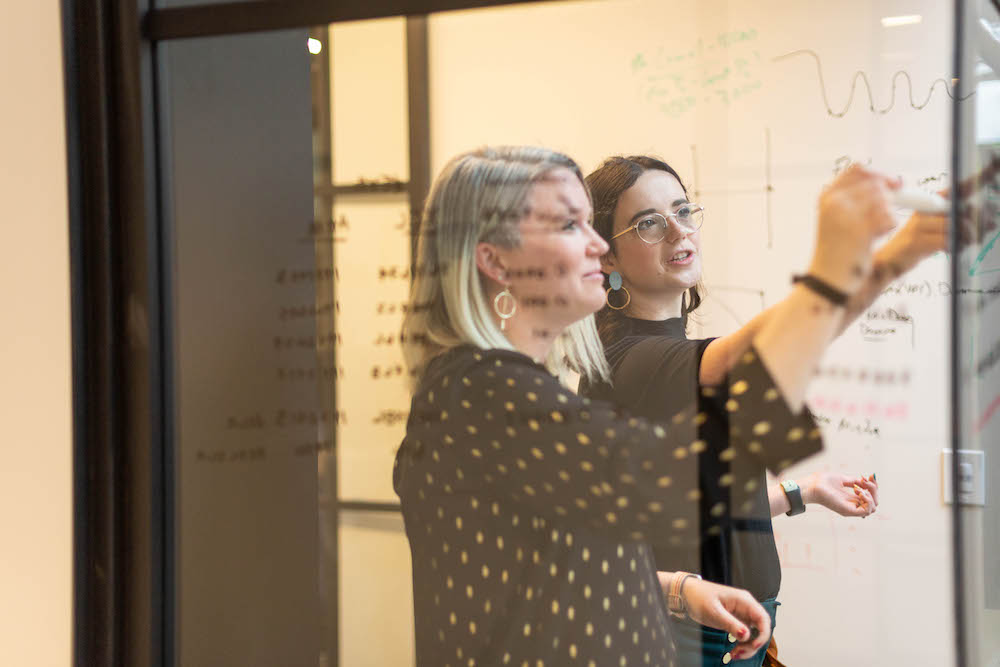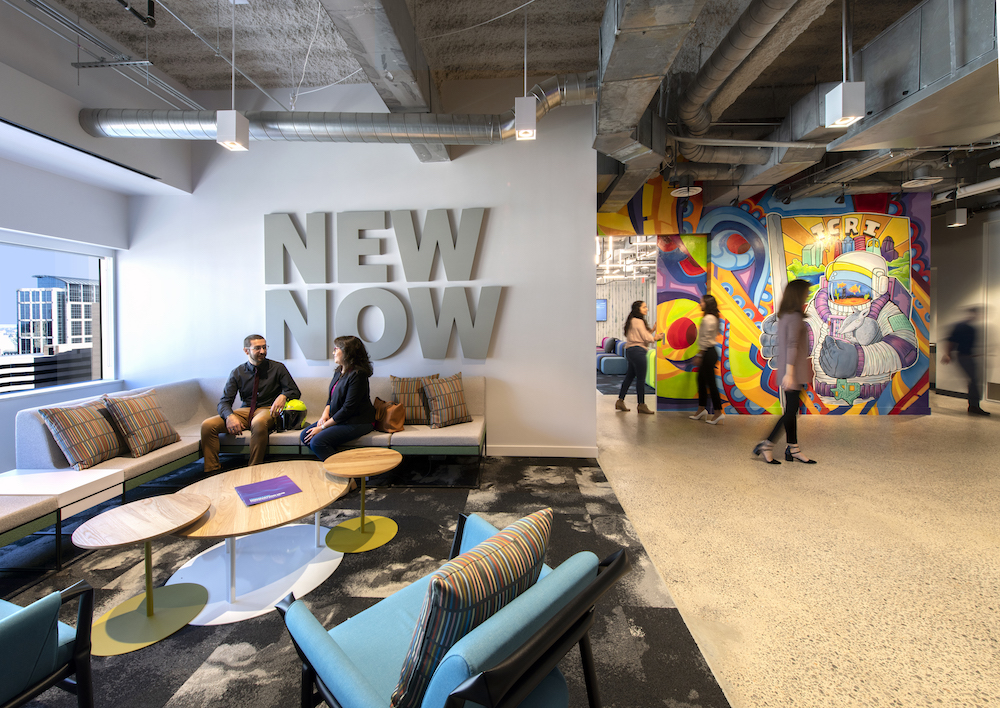PDR’s Julie Fuex explains how leadership that proactively plans for change fatigue will find that the effort invested reaps significant rewards.

This year brought new hope for an end to the pandemic and a return to normalcy, but the rise of the Delta variant put a wrench in many organizations’ return to the office or future of work efforts. While this can seem like another roadblock to getting back to normal, it is also an opportunity for leaders to rethink the future of work and adjust their change fatigue and management approach to fit within the current moment. No longer can leaders charge forward with bold change initiatives and expect people to be inspired to follow. What people need right now is stability, clarity, empathy, compassion, and support.
No longer can leaders charge forward with bold change initiatives and expect people to be inspired to follow.
Before jumping into the return to office planning, take a moment to acknowledge how harrowing the past 18 months have been. Outside of the apparent stress of living through a pandemic and constant worry about their jobs, health, and family, people’s work lives have been upended. They’ve had to constantly adapt to the multitude of changes coming at them – figuring out how to work remotely using new tools and technology, changing processes and workflows to better fit virtual working, and adapting to the changing business models or restructuring within many organizations. The relentless barrage of changes and stressors has resulted in extreme change fatigue and burnout.

Assessing & Addressing Change Fatigue
Change fatigue occurs when disruptive changes exceed an individual’s ability to adapt to them, and it can significantly hinder an organization’s effort to shift (yet again) where and how employees work. Before planning how to return to the office, take the time to acknowledge the stress people are experiencing and look for signs of change fatigue. If negativity, resistance, apathy, and disengagement are prevalent, or if reports of being overwhelmed, exhausted, and frustrated are increasing, change fatigue has set in. If leaders do not acknowledge or address this, any effort to adjust ways of working could fail. Start the office re-entry planning here, assess change fatigue within the organization, and plan to provide support and resources to team members.
Before planning how to return to the office, take the time to acknowledge the stress people are experiencing and look for signs of change fatigue.
Once measures to address change fatigue are in place, then the work for planning how to return to the office can begin. Engaging employees and people managers in this process and allowing them to inform the decision can help rebuild or strengthen the trust necessary for successful change initiatives. Use surveys, focus groups, or interviews to gather data on individual and business needs. What do employees need from an individual perspective to do their best work? What level of flexibility is preferred? What resources do employees need to support them, both in and out of the office? How effective is their current remote environment in supporting their work? How effective is the office in supporting their work? How can teams work together to be most effective in the future, and what resources will that require? Gathering this information from both individual contributors and people leaders allows executives to understand and balance the needs of individuals with the needs of the business and determine a solution that is best for the organization and aligned with their mission, values, and culture. Whether that be working solely in the office, exclusively remote, or a hybrid solution.

Clarity in Communication & Path Forward
After an organization has landed on its unique solution, it’s time to share the decision with employees. The importance of selecting the right messaging for this announcement cannot be understated. Organizations must be clear in their intentions for their future of work and provide clarity to employees on future expectations. Start with connecting how the return to office plan reinforces the company’s purpose, values, and culture. Be transparent in sharing the data gathered and feedback received, the scenarios considered, and the pros and cons of each to help explain how the decision was made. Instead of focusing on where team members will be working and the number of days expected in each location, explain how they will work individually and as a team moving forward, which work environment(s) support that work, and why that is best for the organization. Capital One’s announcement of their future as a hybrid work company is an excellent example of how a decision on the future of work can be communicated to explain the decision-making process, the benefits of the final decision, and how it aligns with the culture.

With the announcement made, the focus shifts to preparing leaders and team members for how the company will work moving forward, ensuring each team member understands their role and expectations. To determine how to enable leaders and team members, ask these questions for each job function and level within the organization: Has anything changed for how they are expected to work? How will the new work model impact their role, work processes, tools, reporting structure, performance measurement, etc.? Once the specific changes each role will have to make to adopt the new work model are defined, targeted training, tools and resources can be deployed to ensure team members are able to work effectively.

One role to be particularly aware of is the role of people leader. People managers have been significantly impacted over the last 18 months and will continue to be affected as organizations move to hybrid work models. Most managers have spent the last year learning how to manage remote employees. Now, leaders shifting to a hybrid work environment will be expected to perfect the art of managing team members face-to-face in the office and remote team members in a virtual environment, all while providing an equitable and inclusive experience for everyone on their team. This requires an entirely new skill set, and organizations that offer the proper support and resources to their teams will realize a much smoother transition and successful adoption.

Engaged Leadership
Finally, and most importantly, lead the change management effort with empathy and compassion. This is essential for building the trust needed to overcome change fatigue and accelerate the adoption of new behaviors. Start by being transparent and open in communications to team members. Establish a feedback loop and frequently engage team members for input. When engaging team members, practice active listening to understand individuals’ needs and pain points truly and then show you are listening by taking action – provide the training, resources, and tools they need to work effectively and overcome those pain points. And be intentional in connecting all communications, decisions, and actions to the organization’s purpose and culture.
No change journey is an easy, straight line from the current to the future state, and transitioning to a hybrid work model or returning to the office is proving to be no different. There will always be bumps and obstacles along the way. The key is seeing those obstacles as an opportunity to learn, involve team members in the process, and readjust the change strategy as needed for course correction. Leaders that proactively plan for a transition closely aligned to their purpose and values and execute with empathy will find that the effort invested reaps significant rewards.

